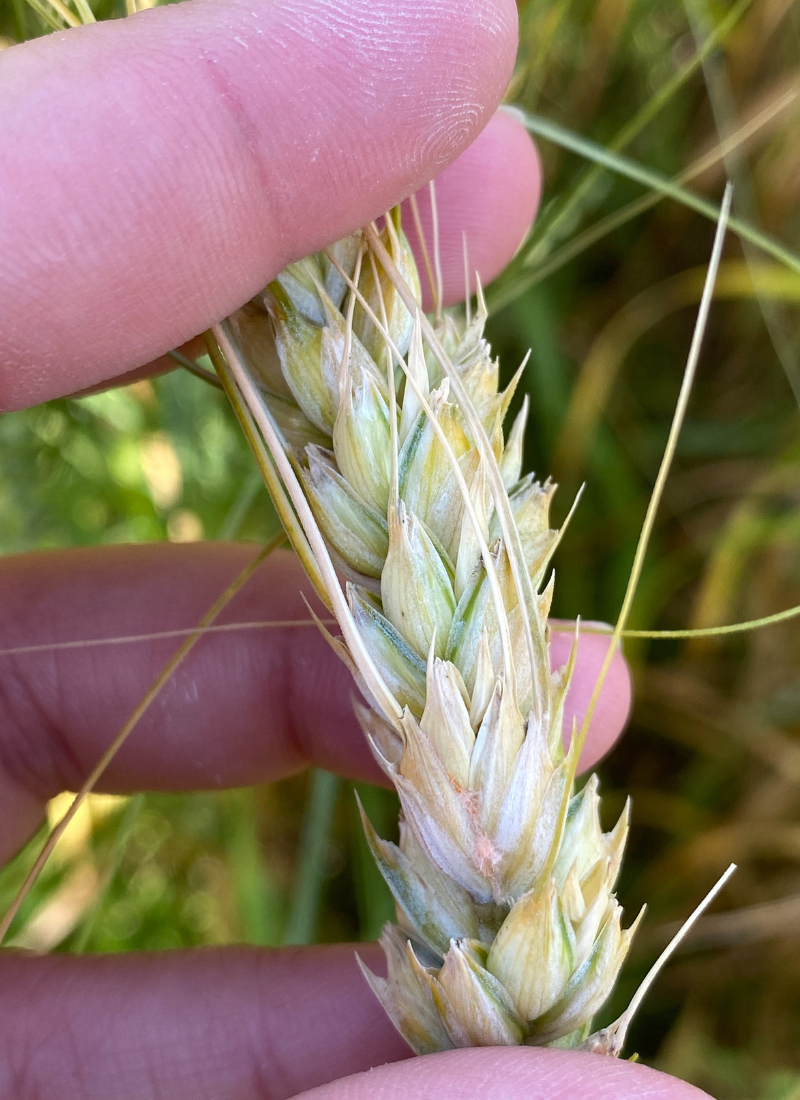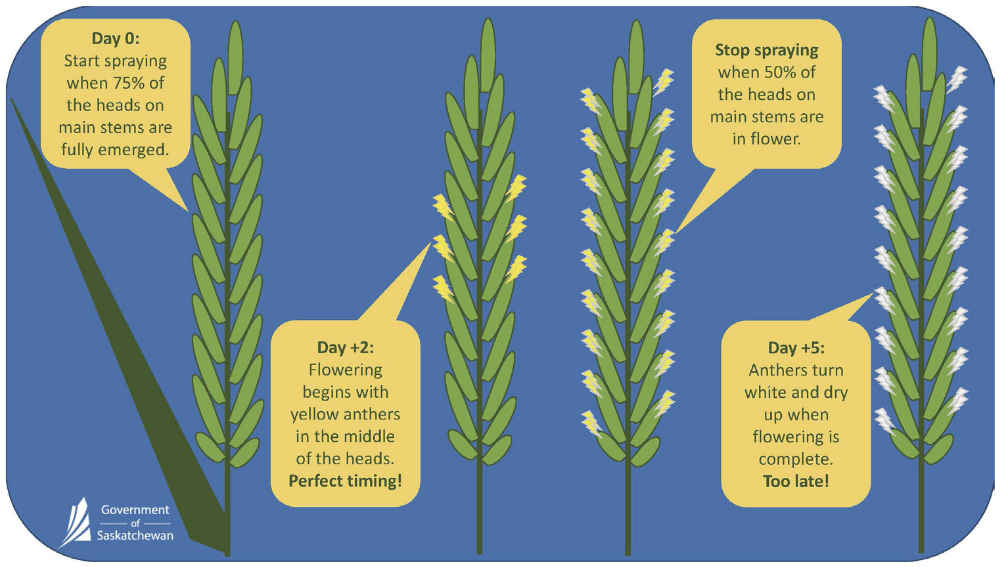Agronomic Resources | Wheat Profit Podcast | Fusarium Resources | Wheat Midge Resources | Harvest Resources | Durum Production Manual
Fusarium Resources
Risk Assessment Maps
Sask Wheat’s Fusarium Head Blight (FHB) risk maps help wheat producers identify the level of risk for FHB infection. The maps, in conjunction with daily field monitoring, help producers determine if the application of a fungicide is necessary.
The FHB risk maps are based on the heading date for a specific crop. Producers should determine their heading date and then follow the map generated for that date.
The map will be available until July 31, and will be housed on a new website coming 2024! Stay tuned!
Sask Wheat Update 2023:
Localized weather events, like the recent flooding in some parts of the province, might not be captured on the provincial risk assessment map. The maps are created at a provincial level based on the amount of WIN weather stations throughout the provinces, so localized weather events may not be captured. It is encouraged for farmers and agronomists to check their own fields and assess their risk on a field specific level, as the map is just one tool for risk assessment.
Understanding the Saskatchewan and Manitoba Fusarium Head Blight Risk Maps
By: Faye Dokken-Bouchard (Plant Disease) and Mitchell Japp (Cereal Crops), Provincial Specialists, Saskatchewan and Pam de Rocquigny, Provincial Cereal Crops Specialist, Manitoba
Both Saskatchewan and Manitoba publish Fusarium Head Blight (FHB) risk maps. At a glance, on a given day the maps may appear to indicate a different risk for growers in each province, which can be concerning for farms along the Manitoba-Saskatchewan border. However, closer examination will reveal minor differences in the models and maps useful for considering FHB risk.
In Saskatchewan, maps are created with models (depending on spring or winter wheat) using temperature and/or relative humidity in the previous five days, plus four days forecast. While in Manitoba, maps are created with a model that uses the hours of precipitation and the hours with temperatures between 15°C and 30°C during the previous seven days. Each province then has its own categorization based on slightly different threshold values – low, moderate, high (and extreme in Manitoba) – based on the output from their respective models. (continued)
Models are also constantly validated and fine-tuned for the region where it is relevant. The model that is best for the Fusarium population and conditions in individual provinces in western Canada, or even across the border in the USA, might not be the same. However, crop scientists and pathologists continue to work together to determine how FHB risk maps can be most valuable to all farmers, including those along the border! Producers along the border may have a potential advantage in assessing risk, by using both maps and interpreting which one is most relevant for their farm. And keep in mind risk maps may not perfectly represent a producer’s individual field(s).
Regardless of the model used, no FHB risk map can be taken as a stand-alone tool to make management decisions about FHB as it only takes into account environment. The existence of disease requires three factors: the interaction of a susceptible host, a virulent pathogen, and an environment favourable for disease development. So although a risk map in Saskatchewan or Manitoba may show High risk due to environment, disease risk may be low if the wheat crop is not at the proper stage for infection.
We strongly encourage referring to additional information and consultation with local extension specialists and agrologists to determine if fungicide applications are needed to suppress FHB in your area.
Sask Wheat Fusarium Management Guide
Use the Sask Wheat Fusarium Management Guide to help manage the fusarium risk in your crops. Click on the image or title to open the guide.
Click each image below for a larger version and more information about managing fusarium.
For a full list of considerations, and for more information about fusarium in Saskatchewan, please visit the Saskatchewan Agriculture website.
Fusarium head blight: Recent research on management strategies
Dr. Randy Kutcher, a professor at the University of Saskatchewan's Crop Development Centre and Department of Plant Sciences, presents his latest research on fusarium head blight management. This presentation was made to Saskatchewan wheat producers at the Sask Wheat 2021 Semi-Annual Meeting on June 8, 2021.
Spraying techniques for cereal disease control
Dr. Tom Wolf of Sprayers101.com, presents on spraying techniques for cereal disease control. Tom is one of North America's most recognized sprayer specialists. He has focused his career on improving the safety and efficiency of spray application, working with both Agriculture and Agri-Food Canada and his own company, Agrimetrix. This presentation was recorded at the Sask Wheat 2021 Semi-Annual Meeting on June 8, 2021.
Keeping it Clean
To help keep marketing options open and maximize return on investment, Cereals Canada recommends growers use practices such as applying a fungicide when there is an elevated FHB risk to manage the disease and to reduce the presence of FHB on seed. It is important to only apply fungicides registered for the crop and to apply according to the instructions on the label.








